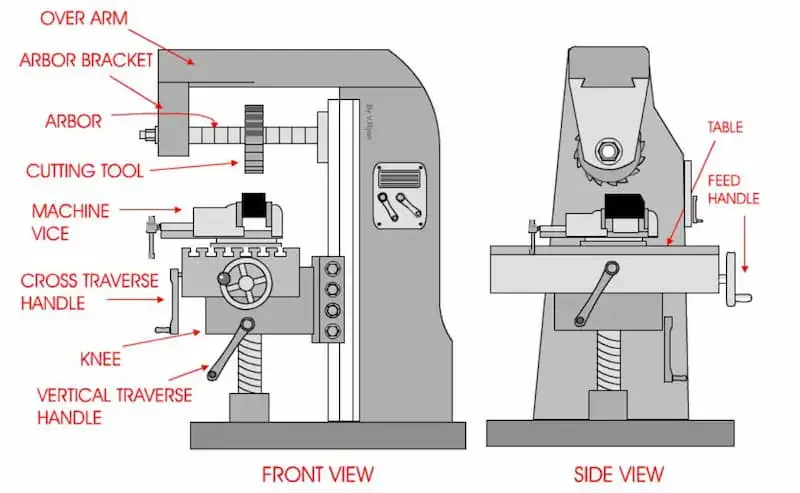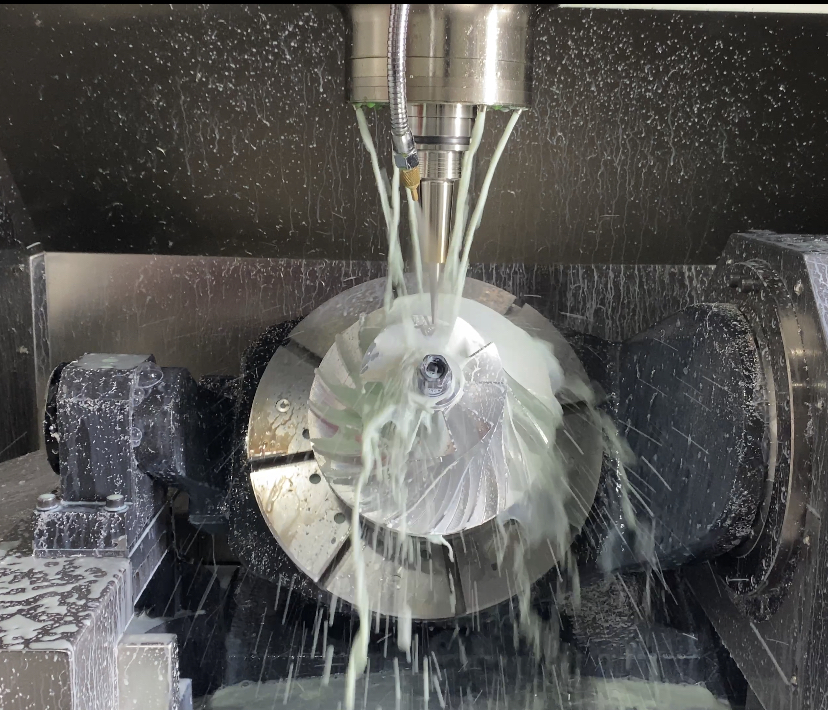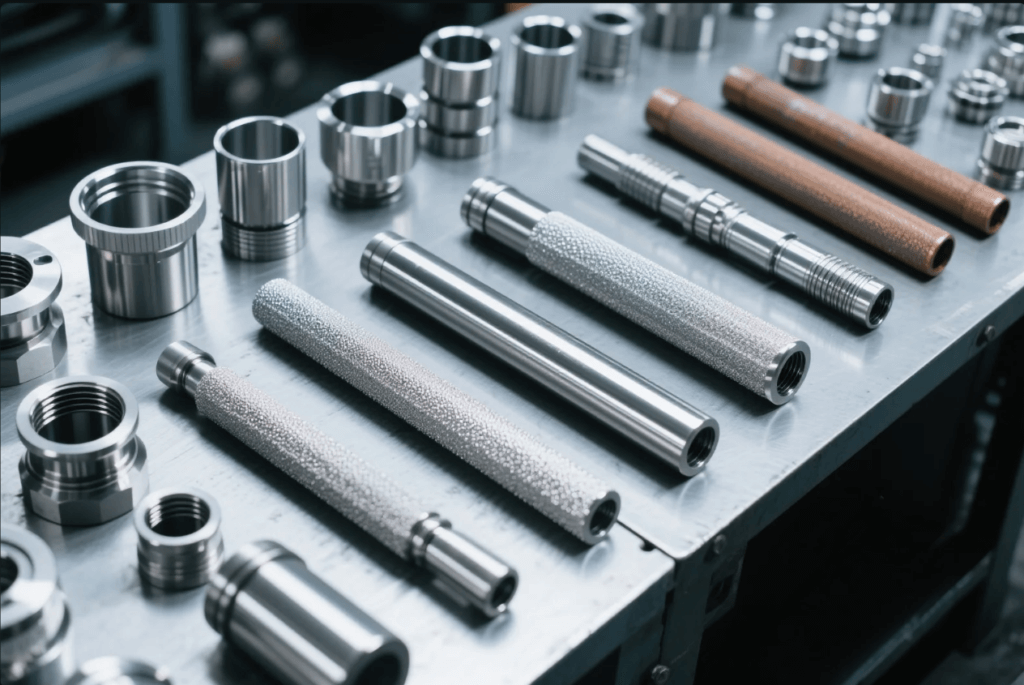What is CNC milling?
Introduction to CNC Milling
CNC milling, short for Computer Numerical Control milling, is a manufacturing process that uses a computer to control a milling machine. Unlike traditional manual milling where the operator directly controls the movement of the cutting tool, it relies on pre-programmed software commands to guide the operation of the machine. This technology has revolutionized manufacturing by enabling high precision, repeatability and automation in the production of a wide variety of parts.
Basic Principles of CNC Milling
How it Works
At its core, CNC milling involves a cutting tool that rotates at high speeds while the workpiece is held stationary or moves in a controlled manner. The tool, mounted on a spindle, removes material from the workpiece to create the desired shape. The movements of the tool and the workpiece are determined by G-code, a standardized programming language for CNC machines. G-code commands specify details such as the tool path, cutting speed, feed rate, and depth of cut.
For example, a simple G-code command like “G01 X10 Y5 F100” instructs the machine to move the tool in a linear path to the coordinates (X=10, Y=5) at a feed rate of 100 millimeters per minute.
Components of a CNC Milling Machine
- Spindle: Holds the cutting tool and rotates it at high speeds. Spindle speeds can range from a few hundred to tens of thousands of revolutions per minute (RPM), depending on the machine and the material being cut.
- Worktable: Holds the workpiece in place. Modern CNC milling machines often have worktables that can move along multiple axes (X, Y, Z and sometimes additional axes like A, B, or C) to allow for complex three-dimensional machining.
- Controller: The brain of the machine, which reads the G-code program and sends electrical signals to the motors that drive the movement of the spindle and worktable.
- Tool Changer (in some models): Automatically changes cutting tools during the machining process to perform different operations such as milling, drilling, and tapping.
Types of CNC Milling Machines
Vertical Milling Machines
Vertical milling machines have a spindle that is oriented vertically. They are ideal for machining flat surfaces, slots, and holes. The operator can easily access the workpiece from the side, making it convenient for setting up and inspecting parts. These machines are commonly used in small to medium-sized manufacturing shops and are suitable for producing a variety of components, from simple brackets to complex mold cavities.

Horizontal Milling Machines
Horizontal milling machines feature a horizontally oriented spindle. They are better suited for machining large workpieces and performing operations that require a large cutting force, such as face milling and boring. The horizontal orientation allows for longer tool reach and can handle heavier cuts, making them popular in industries that produce large mechanical parts, like automotive engine blocks or large industrial gears.

5-Axis Milling Machines
5-axis milling machines offer the highest level of flexibility and precision. In addition to the traditional X, Y, and Z axes, they have two additional rotary axes (usually A and B or A and C). This allows the cutting tool to approach the workpiece from any angle, enabling the machining of extremely complex shapes that would be impossible or very difficult to produce with 3-axis machines. 5-axis milling is widely used in aerospace, medical device manufacturing, and high-end mold making.

Materials Suitable for CNC Milling
Metals
CNC milling can handle a wide variety of metals, including:
- Aluminum: Known for its lightweight and good machinability. It is commonly used in aerospace, automotive, and consumer electronics applications.
- Steel: Ranging from mild steel to high-strength alloy steels. Used in construction, machinery, and tool manufacturing.
- Titanium: Valued for its high strength-to-weight ratio and corrosion resistance. Widely used in aerospace and medical implants.
- Copper and Brass: Excellent electrical conductivity and good machining characteristics make them suitable for electrical components and decorative parts.
Non-Metals
Non-metallic materials that can be milled include:
- Plastics such as ABS, PVC, and nylon. Used in prototyping, consumer products, and industrial applications.
- Composites like carbon fiber reinforced polymers (CFRP) and glass fiber reinforced polymers (GFRP). These materials are popular in aerospace and high-performance automotive industries due to their high strength and low weight.
- Wood and Graphite for specialized applications such as woodworking and electrical discharge machining (EDM) electrode production.
Applications of CNC Milling
Aerospace Industry
In the aerospace sector, CNC milling is used to produce critical components such as turbine blades, engine casings, and structural parts. The high precision and repeatability of CNC milling ensure that these parts meet strict tolerances and performance requirements. For example, turbine blades are often made from high-temperature alloys and require complex 5-axis machining to achieve the aerodynamic shapes needed for efficient engine operation.
Automotive Manufacturing
Automotive manufacturers rely on CNC milling for producing engine components (e.g., cylinder heads, crankshafts), transmission parts, and custom prototypes. CNC milling allows for the rapid production of parts with tight tolerances, which is essential for the performance and reliability of modern vehicles. Additionally, it enables the production of complex shapes for lightweighting purposes, helping to improve fuel efficiency.
Medical Device Production
Medical devices, such as orthopedic implants, surgical instruments, and dental prosthetics, require extremely high precision and surface finish. CNC milling is used to machine these parts from biocompatible materials like titanium and stainless steel. The ability to produce customized parts based on patient-specific data, thanks to CNC technology, has revolutionized the field of personalized medicine.
Consumer Electronics
Consumer electronics products, including smartphones, laptops, and tablets, often have components made through CNC milling. Aluminum casings, for example, are milled to achieve sleek designs and precise fits for internal components. CNC milling also enables the production of small, intricate parts like connectors and heat sinks with high accuracy.
Advantages of CNC Milling
- High Precision: CNC milling can achieve tolerances as tight as ±0.001 mm, ensuring consistent quality in part production.
- Automation: Once programmed, CNC machines can run continuously with minimal human intervention, increasing productivity and reducing labor costs.
- Complex Shape Machining: Capable of producing parts with intricate geometries that would be difficult or impossible to create using traditional machining methods.
- Repeatability: Identical parts can be produced over and over again with the same high level of accuracy, making it ideal for mass production.
- Flexibility: Easily adaptable to different materials, part designs, and production requirements by simply changing the CNC program.
Limitations of CNC Milling
- Initial Setup Costs: CNC milling machines are expensive to purchase and maintain. The cost of software, training, and tooling also adds to the overall investment.
- Programming Complexity: Creating accurate G-code programs for complex parts requires skilled programmers and can be time-consuming.
- Material Removal Limitation: CNC milling is a subtractive manufacturing process, meaning it removes material from a workpiece. This can result in significant material waste, especially for parts with complex internal structures.
- Size Limitation: The size of the parts that can be machined is limited by the size of the machine’s worktable and the reach of the cutting tool.
Future Trends in CNC Milling
The future of CNC milling is likely to be shaped by several trends:
- Integration with Industry 4.0: Connecting CNC machines to the Internet of Things (IoT) for real-time monitoring, predictive maintenance, and optimized production scheduling.
- Advancements in Software: More intuitive CAD/CAM software that simplifies the programming process and allows for better simulation of machining operations.
- Hybrid Manufacturing: Combining CNC milling with other manufacturing processes, such as 3D printing, to leverage the benefits of both additive and subtractive manufacturing.
- Automation and Robotics: Increased use of robotic systems for loading and unloading workpieces, further enhancing the automation and efficiency of CNC milling operations.
Conclusion
CNC milling is a versatile and essential manufacturing process that has transformed the way parts are produced across various industries. Its ability to deliver high precision, automation, and complex shape machining makes it a cornerstone of modern manufacturing. While it has its limitations, ongoing technological advancements are continuously expanding its capabilities and applications. Whether you are involved in aerospace, automotive, medical, or consumer electronics manufacturing, understanding CNC milling is crucial for staying competitive in today’s global market.






